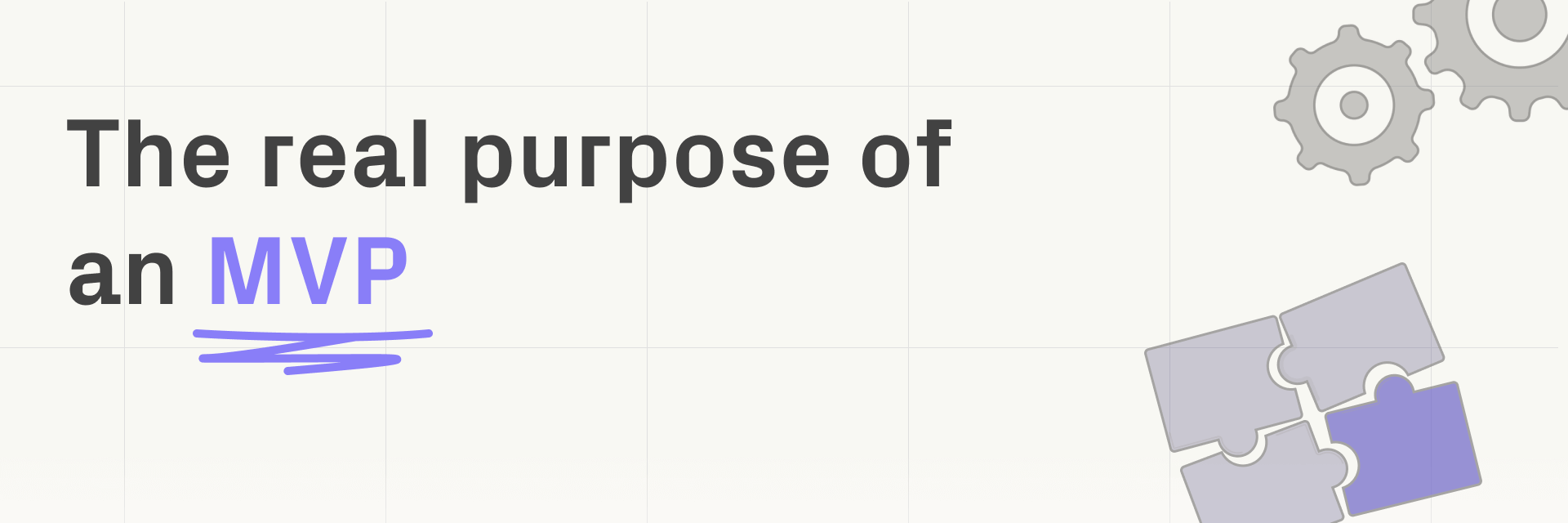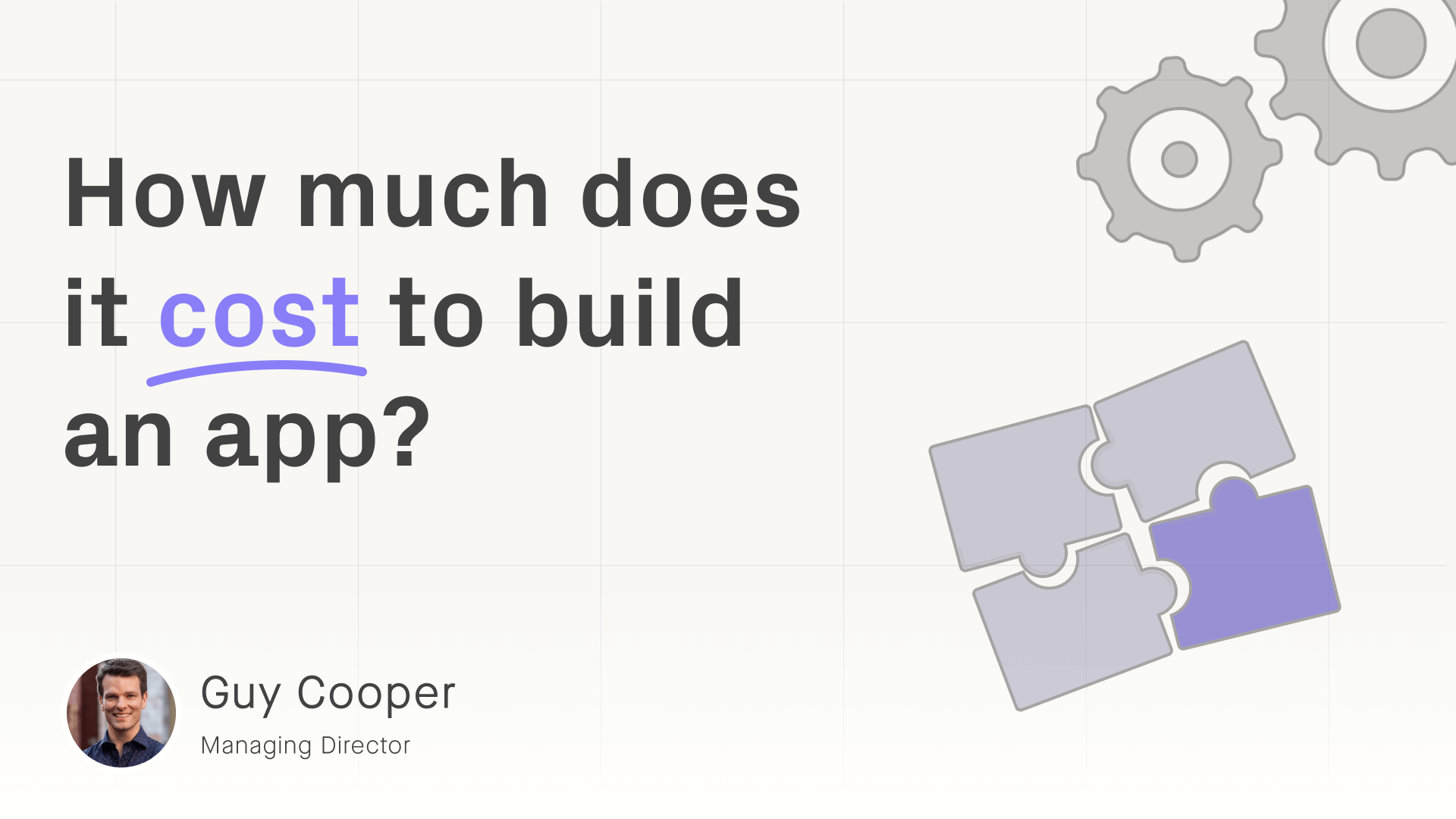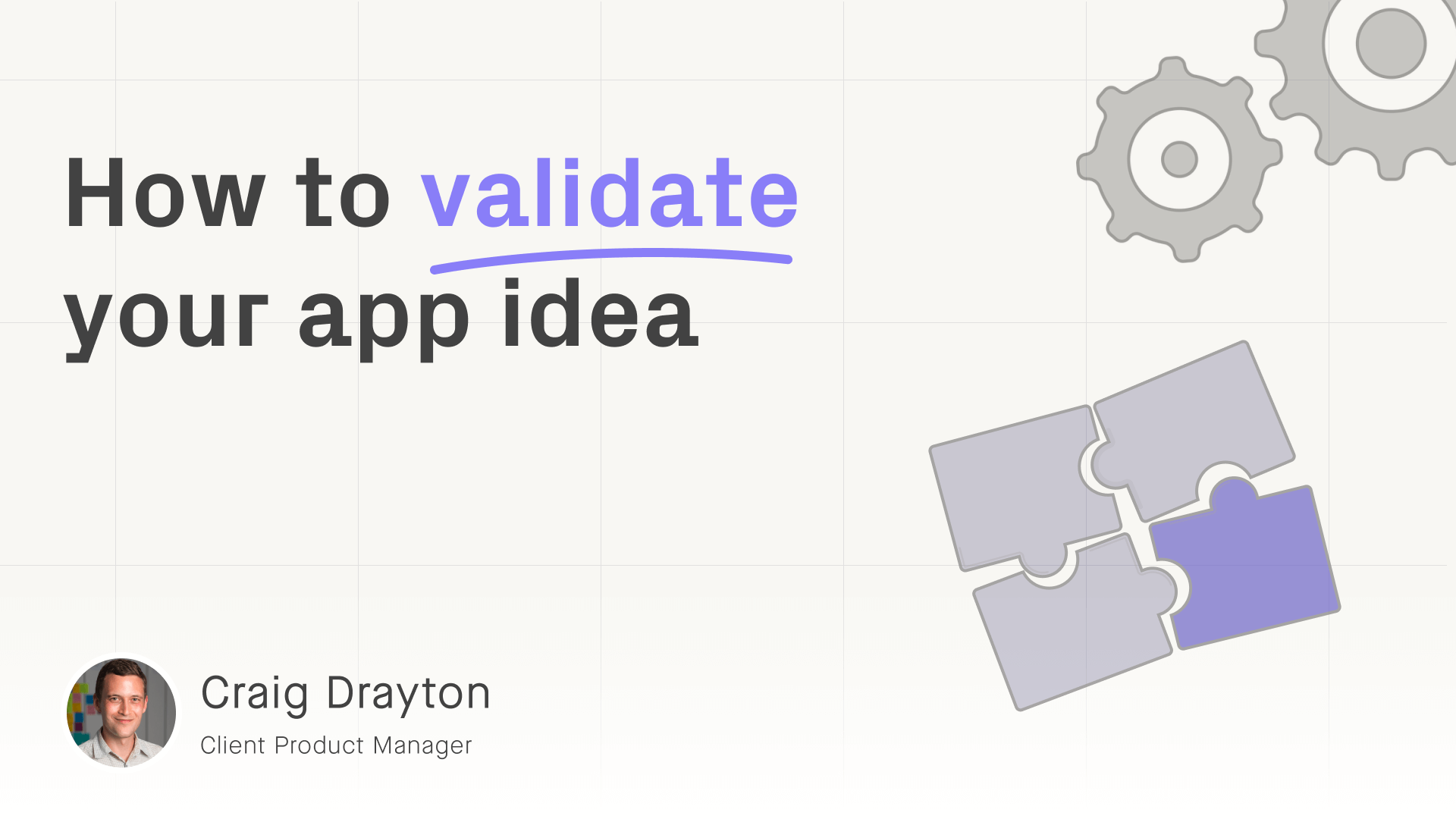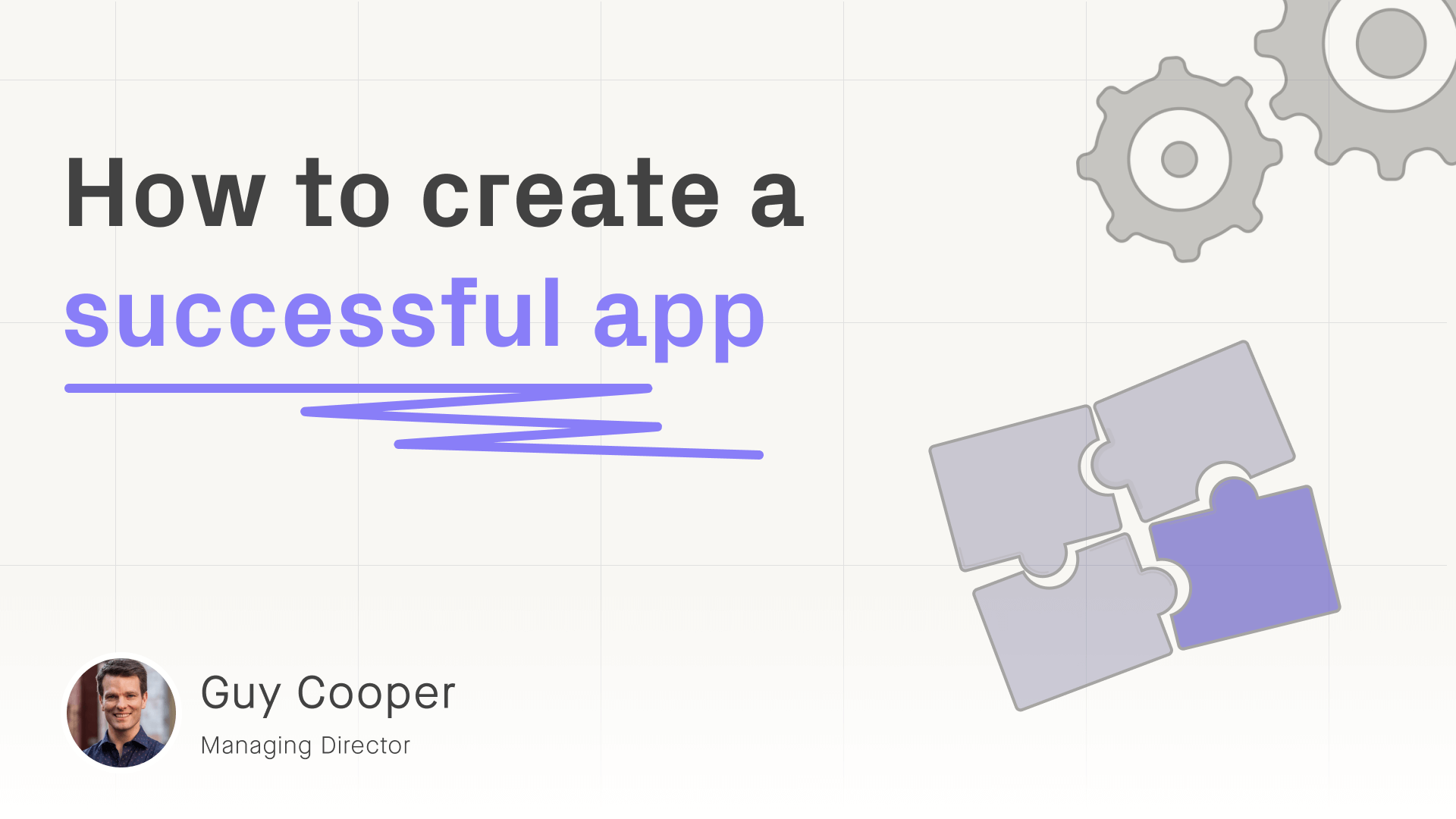When it comes to building a new product, clarity on what an MVP really is can make the difference between wasted resources and meaningful progress. Craig Drayton, our Client Product Manager explains common misconceptions and how strategic MVPs help founders to build smarter, validate faster and reduce risk.
My role is to help our clients shape their knowledge and ideas into the most promising product possible – and then work with the team here at Wave to bring that product to life.
One thing I see often, especially in the early stages, is a misunderstanding of what building a minimum viable product (MVP) is meant to achieve. The term has become shorthand for ‘a quick first version’ – but that oversimplifies it. An MVP is not just a quicker or cheaper way to get to market. It’s something far more useful. You can start today, and it doesn’t have to be daunting.
Let’s get into it.
What is an MVP actually for?
Developing an MVP is meant to help you learn, not just launch. It’s a tool for testing assumptions – about your customers, product and market – as quickly and inexpensively as possible.
When done well, an MVP answers questions like:
- Do people care about this problem?
- Does this solution actually help them?
- Will they pay for it?
- Can we deliver it reliably?
These aren’t small questions. And the earlier we ask them – and seek evidence-based answers – the less time, money and effort we risk wasting on ideas that don’t hold up in practice.
The problem with how MVPs are usually approached
In practice, I’ve seen too many founders treat the MVP for their startup as just a lightweight version of their ideal app. A quick build with limited features, pushed out the door to say ‘we’ve launched’.
But if that’s your only strategy, what do you learn when no one engages?
- Was the idea wrong?
- Were the features off?
- Was it poorly executed?
- Did users not find it?
- Was the messaging unclear?
You’ve spent time and money and you’re left with very little insight. So, you’ve taken on the cost of shipping without the benefit of learning.
That’s not what MVPs are for.
Think of MVPs as experiments
I prefer to think of MVPs as experiments. That framing opens up a much broader and more strategic set of options.
Instead of defaulting to a codebase, we ask: What’s the cheapest, fastest, clearest way to test this assumption?
It might be:
- A customer interview
- A prototype in Figma
- A landing page with signup intent
- A concierge-style service delivered manually
- A Wizard of Oz MVP (where automation is faked behind the scenes)
These aren’t full products, but they’re valid experiments. The goal isn’t just to ‘build something’. It’s to reduce uncertainty before you invest heavily.
What to test? Start with the riskiest assumptions
In our product discovery work, we often break risks down into four categories as defined by Marty Cagan from SVPG:
- Value risk – Do users care about the problem you’re solving?
- Usability risk – Can users figure out how to use your solution?
- Feasibility risk – Can we technically build and deliver this?
- Viability risk – Can we support, scale, and monetise this over time?
Good MVPs are designed to address one or more of these. That’s why no two MVPs are the same – because no two products carry the same mix of risks.
How long should this take?
I get this question a lot, and I understand why – people want certainty. But the real answer is: it depends.
The good news? You can often run early experiments quickly. You can speak to potential customers this week. You can build a prototype next week. Some teams validate or invalidate assumptions in a matter of hours.
But when it comes to building an MVP, I usually recommend thinking in terms of weeks, not months or years. 4–12 weeks is a useful planning range for a modest, well-scoped MVP.
And importantly – this first release is not the destination. It’s the beginning of a longer journey of discovery and refinement.
Final thoughts
One of the things I love most about this phase of product development is how much impact a small amount of upfront thinking can have.
Sometimes, a single experiment saves weeks of development. One customer interview reframes the entire roadmap. A few days of prototyping unlocks a whole new way to approach the solution.
An MVP, when done properly, doesn’t just help you move faster – it helps you move in the right direction, giving you a better chance of success.
And that’s the real goal.
Looking for tailored advice for your app project?
We offer free 30 minute consultations to provide you with:
- A clear understanding of what your app project would involve, including a realistic expectation of cost/time
- Insight into the most important things to consider for your project before you proceed
- Recommendations on next steps
We’d love to hear from you.
Book a free 30 minute consult.
About the author

Craig Drayton is the Client Product Manager at Wave Digital. He has spent many years leading and building new digital products, and loves using this experience to help clients avoid common pitfalls and accelerate them down their path to success.




